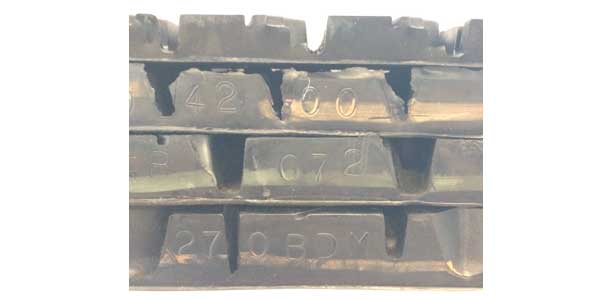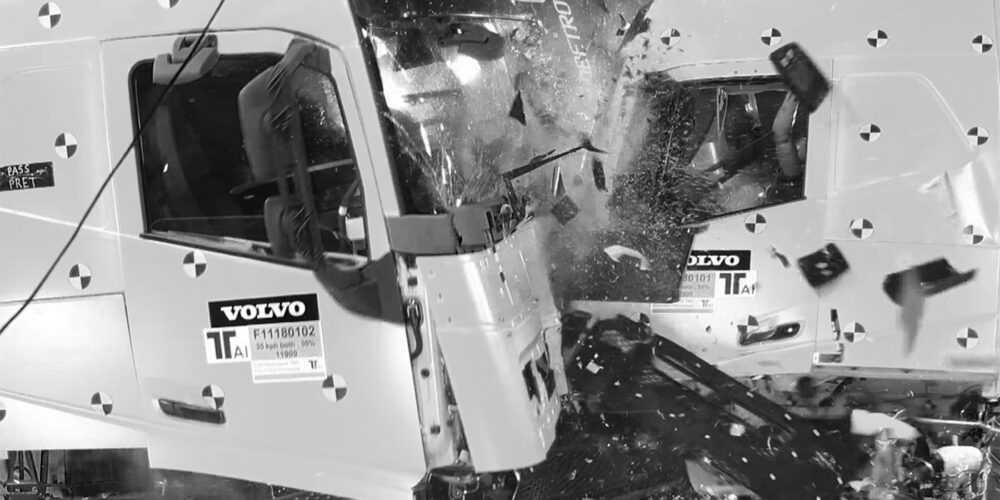Low rolling resistance (LRR) tires have been a frequent topic of conversation among fleets recently. Back when the cost of fuel was closing in on $4 per gallon, fuel MPG became the focal point, and everyone seemed to go crazy and focus on fuel alone. With the advent of LRR tires and Smartway, the focus has shifted to tires. When you couple this with the cost of tires and recaps, fleet managers seem to focus more on cost rather than the amount of rubber width and tread depth. There is no question that under perfect conditions, LRR tires have an effect on using less fuel, but that should not be the only consideration. Here are a few factors that fleet managers should keep in mind when deciding between tires with deep or shallow rubber.
Deep Rubber
For the most part, tires with deep rubber will run longer, and although deep rubber has a negative effect on fuel economy, the positive side is longer life, less debris penetration, less visits for flat tires and casing protection. Many of the top CSA issues are less than 2/32nds rubber—deeper rubber could help.
As for tractor drive axle positions, traction design tires with deep lugs, this helps with traction, life and wards off uncontrollable road debris and reduces flat tires. This also helps with traction during inclement weather. This helps the drivers’ attitude when it comes to perceived traction. Deep rubber also does give you a little squirrelly feeling when new at 32/32nds and possibly some heel and toe wear with high horsepower and automated transmission. Deep rubber also would be considered less desirable when it comes to LRR and fuel economy. Deep rubber drive recaps should also be considered for all the same reasons, and cap cost should be looked at as cost per 32nds and not the cost of the cap by itself.
Shallow Rubber
Shallow rubber has generally been fleets’ default choice for trailer positions, due to the lower expense and benefits when it comes to low rolling resistance and irregular wear. Also, shallow trailer tires will not be stolen in the drop yard. Shallow rubber on trailers quickly go from 11/32nds to 2/32nds for most fleets do not align trailer axles and before you realize it, CSA has got you. I still suggest deep 22/nds rubber especially for regional non-drop yard type operations. When recapped, deep rubber becomes the better choice again, drop yards or no.
As for tractor tires, most steer axle applications are 18/32nd and feature less rubber and less wear, are easier to balance, and are designed to limit front axle wear. I still suggest deeper 22/32nd rubber on the steer axle.
Conclusion
LRR tires certainly will bring some fuel savings when tested on a complete unit. The savings will also show on a tractor, but are much harder to measure. LRR tires are shallower and have a softer designed rubber compound which means, in my mind, less wear and more visits to the shop for replacement. Shallower rubber means more road calls and LRR tires seem to command a higher cost—tire manufacturers want a piece of the savings for engineering ROI.
In my 40 years of fleet management, I have been a proponent of deep rubber, even when I was criticized by my peers for many reasons—it was not a fashionable choice; heavy rubber causes cap failures; they go out of balance; etc. My reasons were simple: more is better. Now it seems that time has proven that the cost per mile for tires and fuel savings are at a cross road of measured value. LRR tires do have their place, I just have not found the place where the data supports the choice. I still pull tires earlier than most, 5-6 32nds, preferably at PM time.
In conclusion, these are my top ten factors for making decisions on tires:
- Customer service and on-time deliveries
- Driver’s hours of service
- Reduced road calls and downtime
- Potential road debris penetration
- Cost per 32nds
- Removal at PM time
- Tread design on new and recaps
- Local service and support
- Brand support
- Last, maybe least: LRR and fuel.
Make the best choice for your fleet and don’t let the cost of fuel alone control the decision.
For more information, visit darrystuart.com or email comments, questions or requests to Darry at: [email protected].














